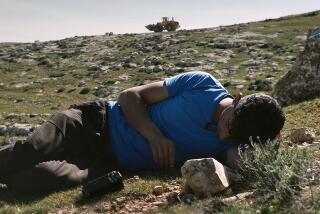Leading AFI’s roll call of reels
- Share via
Patricia King Hanson
Executive editor and project director for the AFI Catalog, which offers a complete archive of all American movies released from 1893 to 1970. Hanson and her staff recently completed the films from 1951 to ’60 and are working on the movies of the 1970s. Several of the decades were published, but now the catalog is exclusively online. The database is available to American Film Institute members online and also on the new Turner Classic Movies’ website database.
Basics: “The primary thing that I do is manage and direct the research for the project and structure it. I have been here for over 22 years.”
Conducting the great film hunt: “You basically have to come up with a list. It’s a chicken-and-the-egg thing -- you can’t start cataloging all the films until you have a list of all the films, and you can’t get a list of all the films until you do a lot of research.
“We had to come up with a game plan for how we know we have all the films. We have some hard-core sources. It is one of my jobs to kind of determine what the sources are, and I certainly get incredible assistance from different staff members who specialize in different things. But you go through things like the U.S. copyright catalog, every single Hollywood Reporter and Variety review. Photoplay in the early years was very helpful to us because they had great synopses.
“For anything prior to 1965, the New York State Censor Board had a review of every film that had applied for a license. Also the MPAA collection at the motion picture academy ... there are a lot of rich sources of information. Then as you are going through, you discover little news items. We go through primarily the Hollywood Reporter and look for news items. You have to keep your eyes and ears open.”
Screen time: “When they did the earlier volumes, they didn’t watch the films. When we started doing the 1930s, we realized we had to see as many films as possible because you wouldn’t get a sense of the film.
“When we watch a film, first and foremost you have to get the exact screen credits. Then you watch the film for not only the plot information but themes -- we have about 7,000 subject headings. We are also looking for [interesting things] maybe in the credits. Our primary source is the film; secondary sources would be many reviews, press kits, sometimes studio records if we can get them. Also, sometimes you will find screenplays that have been published or interviews with the filmmaker.”
Pleasures: “If I had to pick a favorite era, it would be the late ‘30s to the late ‘40s. I like the charm of some of the more simple stories. I love all movies, but things got to the point a lot quicker in those days. When they tried to tell a story, they did it in a very short period of time. There were no long sweeping shots or moments of silence. I like the economy of how they went to the story. It was more straightforward and less nuanced than today’s films.”
Project history: “The catalog project had done two volumes -- the 1920s and the 1960s -- in the late 1960s and early ‘70s. It was part of the AFI, but it was housed at the Library of Congress in Washington.
“It stopped for many years, primarily because of the difficulty of getting funding. A lot of people had written and talked to various people at AFI over the years and said, ‘We have to [continue] with this.’ With major, major help financially by the National Endowment for the Arts and the National Endowment for the Humanities and the David and Lucile Packard Foundation, AFI was able to start up the project again.
“In October ‘83, it started kind of small and it expanded over the years. Now we are back to six full-timers.”
Time frame: “It’s a very time-consuming and incredibly expensive project because it takes so long to do it -- it takes about five years to do one of those decades.”
Resides: Beverly Hills
Age: 59
Union or Guild: None
Background: Degrees in Italian, medieval history and library science, plus work on a set of film reference books.
Getting hooked: “I don’t think I remember the first movie I ever saw, but the first time I remember the whole family getting in the car and going to the movies was ‘Royal Wedding.’ I think I was 4 then. That really stuck in my mind because of the dancing on the ceiling.
“I have a much older brother and sister, and they used to take me to movies in Westchester. My brother must have had a thing about Betty Grable because we went constantly to Betty Grable movies. I fell in love with movies that way.”
-- Susan King
More to Read
Sign up for The Wild
We’ll help you find the best places to hike, bike and run, as well as the perfect silent spots for meditation and yoga.
You may occasionally receive promotional content from the Los Angeles Times.







